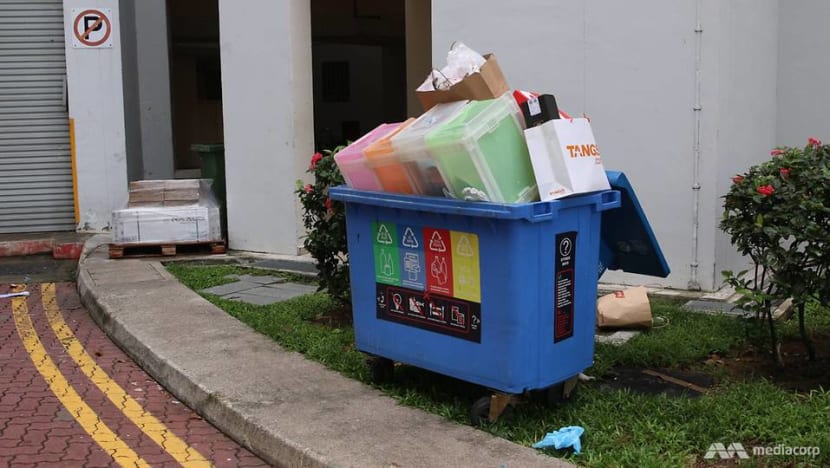18% increase in waste generated in Singapore last year as economic activity picked up

SINGAPORE: Singapore's overall waste generation rose by 18 per cent last year - the first increase after four years of decline - as economic activity picked up after the loosening of COVID-19 restrictions.
In all, about 6.94 million tonnes of solid waste were generated last year, compared with the 5.88 million tonnes in 2020, said the National Environment Agency (NEA) in its annual waste and recycling report on Monday (Apr 18).
The domestic sector generated 1.82 million tonnes of waste, up from 1.77 million tonnes in 2020, while the non-domestic sector generated 5.12 million tonnes, an increase from 4.12 million tonnes during the same period.
Of this, 3.83 million tonnes of waste were recycled last year, translating into an overall recycling rate of 55 per cent - up from 52 per cent in the previous year.
About 3.12 million tonnes of solid waste was disposed of, an increase of 10 per cent from 2020.
"2020 was an anomalous year with lower waste generation and recycling rates due to the impact of COVID-19, particularly during the circuit breaker period (April to May 2020) when activities were curtailed," said NEA.
HOUSEHOLD RECYCLING
More waste was generated by the domestic sector, which includes households and trade premises such as hawker centres and schools, as the work-from-home trend continued into 2021, said NEA.
At the same time, however, the domestic recycling rate remained unchanged at 13 per cent.
NEA said it will continue to encourage households to recycle more and recycle right, and has also developed educational content to guide the public on items that can and cannot be recycled.
Currently, about 40 per cent of the contents found in the blue recycling bins cannot be recycled due to contamination, mainly from food and liquid waste, as well as e-waste and styrofoam, said NEA.
Households also deposit items such as clothing and soft toys, which should not be placed into the blue bins.
To nudge households to step up their recycling efforts, NEA is also planning to distribute recycling containers to those that want them in the later part of 2022. More details will be announced at a later stage.

NON-DOMESTIC SECTOR
The recycling rate of the non-domestic sector, which includes industries and commercial premises, increased from 68 per cent to 70 per cent in 2021.
Recycling rates for plastic, horticultural and wood waste also improved by 2 percentage points, 3 percentage points and 12 percentage points respectively.
“Waste generators sent more of such waste to biomass and composting facilities for recycling instead of the Waste-to-Energy plants,” said NEA.
The recycling rate of paper and cardboard increased to 39 per cent last year as compared to 38 per cent the year before.
The agency noted that with the amount of waste generated growing as economic activities ramp up, there will be greater urgency to shift from a linear to a circular economy.
“With the Singapore Green Plan 2030 and the Zero Waste Masterplan, our national goals are to achieve a 70 per cent overall recycling rate by 2030 and to reduce the amount of waste sent to Semakau Landfill by 20 per cent per capita per day by 2026 and 30 per cent per capita per day by 2030,” said NEA.
This will help to extend the lifespan of the remaining landfill, which will be filled up by 2035 at the current rates of waste disposal, it added.
NEA also added that Singapore’s vision of becoming a “zero waste nation” will take the efforts of the whole country.
“This is a long-term effort that requires all of us – from the people, private and public sector – to work together.”
















